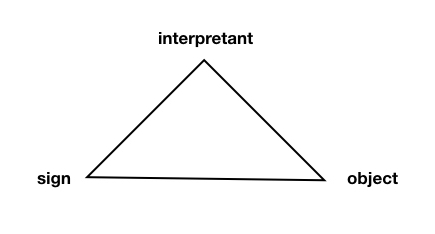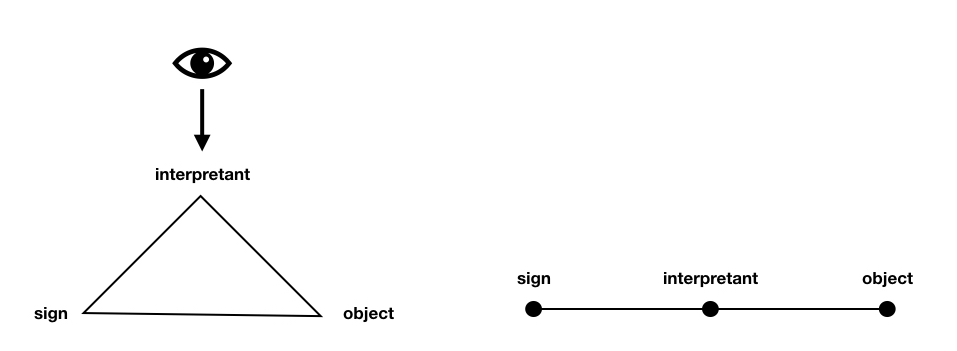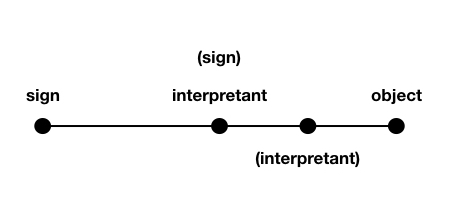
Finally, we are on the topic of signs (Atkin, 2016, Chapter 4). I might have to revise my initial impressions discussed in this post. We shall see.
The first thing that surprised me was that the “interpretant” element does NOT represent a person. It represents the understanding, the translation, which enables the link between the object and the sign (or, sign-vehicle). The second thing that surprised me was that Interpretant itself is potentially a sign in another triad. This seems to have to be conditional on how an agent is treating the sign-triad. Here is an example:
“An intruder makes a noise which starts my dog barking, alerting me to the presence of the intruder. The intruder is the object, the particular noise is the sign-vehicle, my dog’s barking is the interpretant. But notice, my dog’s barking functions as a further sign of the intruder, my response to the dog’s barking, as an interpretant. And we could continue.”
(Atkin, 2016, p. 131)
What makes the first interpretant possible is the dog’s conditioning. He is able to detect something else (the intruder) THROUGH (or with the help of) the noise. The dog’s conditioning translates the sign into the object. Moreover, the dog’s response makes the object (intruder) more available for the human who is accompanying the dog. Similarly, what makes the dog’s barking a sign is the human’s understanding of what the barking represents. What is crucial here is the final statement, “And we could continue.”
Let’s look at the triangle from an angle that would (1) turn the 2-dimensional image of into a 1-dimensional image and (2) place the “interpretant” in the middle of the other two elements.

This makes it easier to see the infinite-regress problem, because we can now more vividly see that the interpretant’s relation to the object (now as a sign) is mediated by another interpretant, which quickly gives rise to a Zeno-type paradox, and the apparent impossibility that we ever get in contact with the object.

But the impression of an infinite regress, manufactured by our rigid categories, is not the same as the actual possibility of an infinite regress. We might get the impression that “we could continue” ad infinitum and, indeed, this impression might be intrinsic to the structure of the signs. However, digging further and further into sub/superordinate sign triads must eventually lead us somewhere outside of the domain of signs. We might, as Dennett would say, begin to see things that are sorta-signs (neural activity), before getting to things that are clearly not signs (physical events).
Reference:
Atkin, A. (2016). Peirce. Routledge.
2 thoughts on “Peirce: Signs 1”